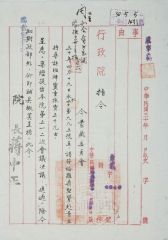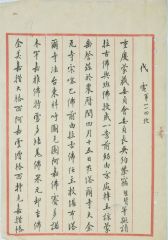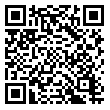- 忘记密码



保存成功!
(1) The Issurance of the Twenty-Nine-Article Ordinance for the More Efficient Governing of Tibet
During the practicing of the regulations for Reincarnation of Living Buddha, some religious and layman forces began to manipulate recognition of reincarnated soul boys with problems arose, such as, lots of Living Buddhas coming from same families; succession between brothers, nephews and uncles and relatives by marriage; being almost same as the hereditary succession. These problems might cause war and seriously endanger the security of nation and society (Fig. 11; refer to Illustrations 90).
The tenth Living Buddha of Kagyu Shamarpa, the sixth Panchen Erdeni and Chogyam Drungpa, Hutuktu of Tashilhunpo Monastery, though being brothers, they fought for the inheritance of the sixth Panchen Erdeni and led Gorkha to invade Tibet, which caused the people of Gtsang to be suffered and Tashilhunpo Monastery be looted. In 1792, Emperor Qianlong sent troops driving back Gorkha, then ordered the dispatched officials to plan the ordinance for more efficient governing of Tibet. In the following year, the government of the Qing Dynasty decreed the "Twenty-Nine-Article Ordinance for the More Efficient Governing of Tibet" (refer to Illustration 19).
Article one of the ordinance specified the reincarnation of Living Buddha explicitly, which established the regulations of the Drawing Lots from the Golden Urn and specified clearly the process for the Drawing Lots from the Golden Urn, the Amban’s role in the Drawing Lots from the Golden Urn and the approval authority of central governments upon soul boys’ reincarnation.
The decreeing of the Twenty-Nine-Article Ordinance for the More Efficient Governing of Tibet marked the legalization and standardization of the administration on the Living Buddhas’ reincarnation of Tibetan Buddhism by central governments. Since then, the related contents have been included in the Regulations from the Court of Colonial Affairs, an important legislative series of the Qing Dynasty, and took effective.
Article 22 of the Twenty-Nine-Article Ordinance for the More Efficient Governing of Tibet also specified that all Living Buddhas and Lamas from monasteries governed by Dalai Lama must be registered in detail. According to this, in 1820, the Tibetan local government accomplished The Rosters for Living Buddhas of Ü-Tsang, Kham, China Proper, Mongol and Other Regions, which categorized Tibetan Buddhism Living Buddhas into two grades, Grand Living Buddhas and other Living Buddhas. Grand Living Buddhas should be documented in the Court of Colonial Affairs and reported to the central government with the Drawing Lots from the Golden Urn being used upon their Reincarnation. Other Living Buddhas were administrated by local governments (refer to Illustration 31).
Based on the Court of Colonial Affairs’ archives, a total of 39 Grand Living Buddhas were registered in the court including the Dalai Lama and the Panchen Erdeni. Among them, twenty-four were from the Gelugpa Sect, thirteen from the Kagyu Sect and two from the Nyingma Sect.
(2) The implementation of the Drawing Lots from the Golden Urn
The Drawing Lots from the Golden Urn regulations absorbed and learnt from the traditional "the Bolus divination" measure for recognition of soul boys. Therefore, once decreed, the system obtained fully support from Tibetan institutional and religious leaders, such as the Dalai Lama, the Panchen Erdeni, various Hutuktus and all monks.
After the establishment of the Drawing Lots from the Golden Urn regulations, the central government of the Qing Dynasty placed a Golden Urn in Jokhang Monastery in Tibet and in Lama Temple in Beijing respectively, for use of the drawing lots for various Tibetan Buddhism Grand Living Buddhas’ reincarnation (refer to Illustrations 91, refer to Illustrations 92). In 1792, Emperor Qianlong dispatched officials to deliver the Golden Urn and the monk dressed portrait of his own to Lhasa. Dalai Lama greeted the Golden Urn and the statue devoutly and decreed a statement especially to all Tibetan people on active support for the execution of the Drawing Lots from the Golden Urn regulations . In 1798, the eighth Dalai Lama ordered to set up the monk dressed portrait of Emperor Qianlong in the vihara especially built by the central government in the Three Worlds Ukkattha Bedroom Palace (refer to Illustration 88). Then, a number of Dalai Lama's and Panchen Erdeni's reincarnated soul boys’ drawing lots were carried out in the palace before the Emperors’ portraits and tablets (Fig. 12; refer to Illustrations 38, refer to Illustrations 46,).
In the procedures of implementation of the Drawing Lots from the Golden Urn, it firstly needed local governments to find candidate soul boys according to the religious rituals and report to the central government requesting for the Drawing Lots from the Golden Urn. After approval, the central government dispatched officials to preside the drawing lots and recognizing reincarnated soul boys. The local governments then reported the situation and result of lawing lots to the central government . Then, enthronement ceremonies were held with the reincarnated soul boys getting succession after being approved by the central government (refer to Illustrations38, refer to Illustrations46, refer to Illustrations50).
After 1793, candidate soul boys of all the Grand Living Buddhas registered in the Court of Colonial Affairs were successively recognized according to the Qing Dynasty's the Drawing Lots from the Golden Urn regulations and were enthroned after being reporting to the central government and getting approval. Exemption of Drawing lots must be specially approved by central governments. No other entities shall have the right (refer to Illustrations48, refer to Illustrations69, refer to Illustrations72).
I. The situation of the Drawing Lots from the Golden Urn in Lhasa
Sumpa Hutuktu (Huthogthu) in Youning Monastery in Qinghai was the first soul boy recognized through the Drawing Lots from the Golden Urn after the regulations being decreed.
For Living Buddhas in Tibet, Phagpalha Hutuktu, the owner of Galden Jampaling Monastery in Qamdo was the first Living Buddha applying the Drawing Lots from the Golden Urn regulations. Emperor Qianlong originally allowed Qamdo to still follow old rules because of its long distance. However, Galden Jampaling Monastery supported the new regulations actively and sent three soul boys to Lhasa for recognition by the Drawing Lots from the Golden Urn in 1796. Emperor Jiaqing (1760-1820) conferred handsome rewards when getting the report (Fig. 13). In 1797, the Drikung Kagyu Sect recognized the fifth Drigung Chetsang by the Drawing Lots from the Golden Urn. Driving by Phagpalha Hutuktu et al, soul boys of Living Buddhas of various denominations were successively recognized by the Drawing Lots from the Golden Urn after the Living Buddhas passing away. According to an uncompleted statistic, from 1793 to 1910, a total of 74 reincarnated soul boys of grand Living Buddhas were recognized by the Drawing Lots from the Golden Urn.
Since the implementation of the Drawing Lots from the Golden Urn, before the Republic of China period, all Dalai Lamas and Panchen Erdenis have been recognized by the Drawing Lots from the Golden Urn, except the ninth, thirteenth, fourteenth Dalai Lamas and the tenth Panchen Erdeni who were approved by central governments for exemption of the drawing lots.
1) The situation of the Drawing Lots from the Golden Urn for the Dalai Lama
I) The ninth Dalai Lama, Lungtok Gyatso (1805-1815) was exempt from the drawing lots by the approval of the central government
The ninth Dalai Lama was the first reincarnated Dalai Lama since the Drawing Lots from the Golden Urn regulation being implemented, and was the one specially approved to be exempt from the drawing lots as well. In 1804, getting report on the eighth Dalai Lama's passing away, Emperor Jiaqing ordered Kyirong Hutuktu to act as the regent, and took in charge of searching for reincarnated soul boys. The ninth Dalai Lama was recognized and exempted from the drawing lots by approval of Emperor Jiaqing . In 1808, the soul boy was enthroned in the Potala Palace with overseeing by officials dispatched by Emperor Jiaqing . The seventh Panchen Erdeni ordained for him.
II) The tenth Dalai Lama, Tsultrim Gyatso (1816-1837), recognized by the Drawing Lots from the Golden Urn
The tenth Dalai Lama was the first Dalai Lama recognized by the Drawing Lots from the Golden Urn. In 1815, upon the ninth Dalai Lama passing away, Emperor Jiaqing ordered Demo Hutuktu to act as the regent, and took in charge of searching for reincarnated soul boys. In 1822, Emperor Daoguang (1782-1850) ordered to send the three candidate soul boys to Lhasa, and carry out recognition based on the Drawn Lots from the Golden Urn in the Potala Palace. The soul boy born in present-day Lithang of Sichuan province was recognized as the tenth Dalai Lama and enthroned in the Potala Palace in the 8th month of the year. The seventh Panchen Erdeni ordained for him.
III) The eleventh Dalai Lama, Khedrup Gyatso (1838-1855), recognized by the Drawing Lots from the Golden Urn
In 1837, the tenth Dalai Lama passed away. In 1841, Emperor Daoguang approved to carry out the Drawn Lots from the Golden Urn in the Potala Palace. The soul boy born in present-day Kangding County was recognized as the eleventh Dalai Lama and enthroned in the Potala Palace in the next year. Emperor Daoguang ordered Changkya Hutuktu to oversee the enthronement and ordered the seventh Panchen Erdeni and the Reting Rinpoche to act as the regents successively. The seventh Panchen Erdeni ordained for the eleventh Dalai Lama. In 1855, Emperor Xianfeng (1831-1861) ordered the eleventh Dalai Lama to come into power. (refer to Illustrations 38, refer to Illustrations 41)
IV) The twelfth Dalai Lama, Trinley Gyatso (1856-1875), recognized by the Drawing Lots from the Golden Urn
In 1855, upon the eleventh Dalai Lama passing away, Emperor Xianfeng ordered the Reting Rinpoche to act as the regent, and took in charge of investigating reincarnated soul boy. In 1858, presiding by the Amban, the ceremony of the Drawing Lots from the Golden Urn was held in the Potala Palace. The soul boy born in Myangyul Gyirtagsum was recognized as the twelfth Dalai Lama. As the eighth Panchen Erdeni was still young, the Reting Rinpoche ordained for the twelfth Dalai Lama. The twelfth Dalai Lama was enthroned in the Potala Palace in 1860 with overseeing by the Amban according to Emperor Xianfeng's order. In 1873, Emperor Xianfeng ordered the twelfth Dalai Lama to come into power (refer to Illustrations 46).
V) The thirteenth Dalai Lama, Thubten Gyatso (1876-1933) was exempt from the drawing lots by the approval of the central government
In 1875, the twelfth Dalai Lama passed away, and a soul boy born in Dabu (present-day Nang County in Tibet) was obtained. The eighth Panchen Erdeni, the regent and the representatives of the three major Monastery all regarded the soul boy as the real reincarnated soul boy, and asked for the Amban reporting to the Emperor requesting exemption of the drawing lots. In 1877, Emperor Guangxu (1871-1908) approved as "not need drawing lots" then formally confirmed the soul boy as the thirteenth Dalai Lama. The thirteenth Dalai Lama was tonsured by the eighth Panchen Erdeni in 1878, and enthroned in 1879 in the Potala Palace by approval of Emperor Guangxu. In 1882, Emperor Guangxu ordered the regent, Kyirong Hutuktu, to give getsul vows and dispatched officials for overseeing. In the 8th month of 1895, Emperor Guangxu ordered the thirteenth Dalai Lama to come into power (Fig. 14, refer to Illustrations 48, refer to Illustrations 50).
2) The situation of the Drawing Lots from the Golden Urn for the Panchen Erdeni
I) The eighth Panchen Erdeni, Tenpai Wangchuk (1854-1882), recognized by the Drawing Lots from the Golden Urn
The eighth Panchen Erdeni was the first Panchen Erdeni recognized by the Drawing Lots from the Golden Urn. In 1853, upon the seventh Panchen Erdeni's passing away, Emperor Xianfeng ordered the Amban to well-arrange the funeral affairs and search for reincarnated soul boys. In 1856, Emperor Xianfeng ordered to send the three candidate soul boys to Lhasa, and carry out the Drawing Lots from the Golden Urn by the Amban in the Potala Palace in 1857. The soul boy born in Tuobujia of Gtsang was recognized as the eighth Panchen Erdeni, who was then tonsured and gave Buddhist name by the Regent Reting Rinpoche. In 1860, presiding by the Amban and the Reting Rinpoche, he was enthroned in Tashilhunpo Monastery. Emperor Xianfeng ordered the Reting Rinpoche to give getsul vows to the eighth Panchen Erdeni and appointed Karchen Lobzang Tenpa Gyaltsen as his Buddhist teacher.
II) The ninth Panchen Erdeni, Choskyi Nyima (1883-1937), recognized by the Drawing Lots from the Golden Urn
In 1882, upon the eighth Panchen Erdeni passing away, Emperor Guangxu ordered the Amban to attend the funeral and search for reincarnated soul boys. As a result, three soul boys were found and Emperor Guangxu ordered to carry out the Drawing Lots from the Golden Urn. In 1888, the soul boy born in Dabu was recognized by the drawing lots as the ninth Panchen Erdeni, who was then enthroned in the Potala Palace with overseeing by the Amban and awards of 10 000 taels of silver approved by Emperor Guangxu in 1892. The ninth Panchen Erdeni dispatched Khenpo to Beijing to express gratitude then. As the thirteenth Dalai Lama was still young, Emperor Guangxu ordered the regent, Demo Hutuktu to give getsul vows and give Buddhist name. In 1902, by approval of Emperor Guangxu, the thirteenth Dalai Lama gave Gelong vows to the ninth Panchen Erdeni in Jokhang Monastery with reporting to the Emperor for Gratitude. In 1931, the Republic of China granted the ninth Panchen Erdeni the title of "Great Master of Infinite Wisdom, Defender of the Nation and Propagator of the Doctrine" (refer to Illustration 61), and conferred the jade album and the jade seal (Fig. 15), what's more, granted him as "Envoy of Propagator of the Doctrine of West Border" and escorted his return to Tibet by the special envoys in 1932. In 1937, the ninth Panchen Erdeni passed away in Yushu of Qinghai province, the national government granted him the posthumous title "Great Master of Infinite Wisdom, Defender of the Nation and Propagator of the Doctrine, Complete Enlightenment" and dispatched President of the Examinations Council, Dai Chuanxian (1891-1949), to attend the funeral (refer to Illustration 66).
III) The tenth Panchen Erdeni, Choskyi Gyaltsen (1938-1989) was exempt from the drawing lots by the approval of the central government
In 1937, after the ninth Panchen Erdeni passed away, the national government decreed the measure of reincarnation and decided to search for his reincarnated soul boy based on it. In 1941, the Banclaen Mkhanpo conference department found a soul boy in Xunhua of Qinghai province through investigation and sent him to Kumbum Monastery, then reported to the Executive Council for requesting exemption of drawing lots. In 1949, the deputy president of the national government, Li Zongren (1891-1969) decreed "Exemption of Drawing Lots" to formally approved the soul boy as the tenth Panchen Erdeni. The specially appointed chairman of Mongol and Tibetan Affairs Commission, Guan Jiyu (1899-1975), et al presided over the enthronement in Kumbum Monastery in the year (Fig. 16; refer to Illustration 78). The tenth Panchen Erdeni telegrammed to the deputy president, Li Zongren, for gratitude (refer to Illustrations 73, refer to Illustrations 74, refer to Illustrations 75, refer to Illustrations 76, refer to Illustrations 77).
3) Situations of the Drawing Lots from the Golden Urn for Jetsun Dampa Hutuktu
Jetsun Dampa Hutuktu was one of the well-known Living Buddhas of the Gelugpa Sect in the Khalkha Mongol (present-day Mongolia) area. He was granted the title of "Grand Lama" by Emperor Kangxi in 1693 with further accumulation conferment after then. Since the central government of the Qing Dynasty implemented the Drawing Lots from the Golden Urn for Living Buddhas recognition in 1793, Jetsun Dampa Hutuktus, from the fifth to the eighth, were recognized by the Drawing Lots from the Golden Urn.
II. Situations of the Drawing Lots from the Golden Urn in Lama Temple in Beijing
In 1793, Emperor Qianlong decreed the drawing lots regulations, and decreed to instruct the Mongol and Tibetan areas on recognizing all grand Living Buddhas using the measure of the Drawing Lots from the Golden Urn as the "Permanent Ordinance" . Reincarnated soul boys of all grand Hutuktus outside Tibet, including the ones of various Mongol tribes and resident in Beijing, should be recognized by the Drawing Lots from the Golden Urn set in Lama Temple in Beijing (expect Jetsun Dampa Hutuktu, etc.) The Mongol Sayin-Noyan tribe Erdeni Pandita Hutuktu was the first Living Buddha recognized in Lama Temple in Beijing by the Drawing Lots from the Golden Urn. Followings were the major Living Buddhas recognized by the Drawing Lots from the Golden Urn in Lama Temple: the fifth and sixth Changkya Hutuktus , the fourth, fifth, sixth and seventh Akya Hutuktus of Kumbum Monastery and the third Living Buddha of Inner Mongolian Wudang Lamasery, the fourth and fifth Isaac Donkor and the seventh Mondrol.

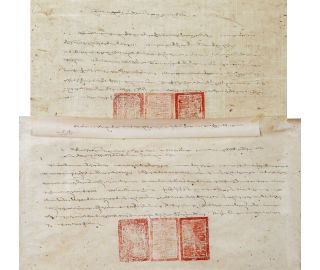
Twenty-Nine-Article Ordinance for the More Efficient Governing of Tibet
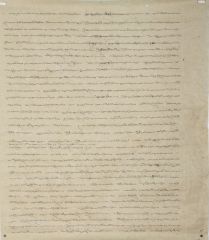
Roster of Tibetan Living Buddhas (Partial)
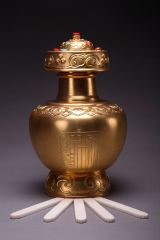
Golden urn and ivory slips for “drawing lots from a golden urn” at Jokhang Temple, Lhasa
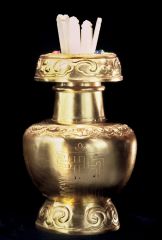
Golden Urn and Ivory slips for “Drawing Lots from a Golden Urn” at Lama Temple, Beijing

Portrait of Emperor Qianlong in Buddhist Robe
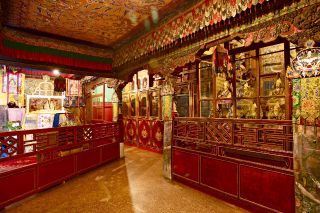
Interior View of Three Worlds Ukkattha Palace in the Potala Palace

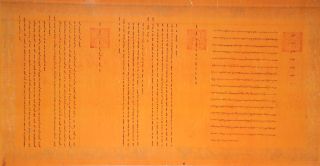
Emperor Xianfeng's Imperial Edict to the Twelfth Dalai Lama Regarding the Enthronement

Imperial Edict by Emperor Guangxu Regarding the Enthronement of the Twelfth Dalai Lama's Qubilgan



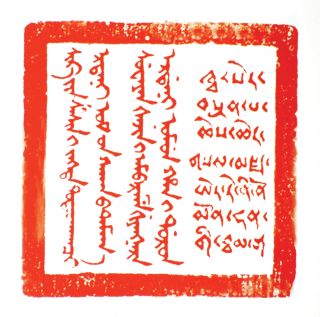
The Copper Seal Conferred upon the Sixth Phagpalha Hutuktu by Emperor Kangxi

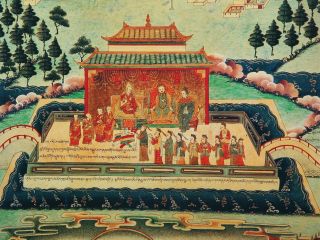
The Thirteenth Dalai Lama Meeting Emperor Guangxu (a mural in the Norbulingka)
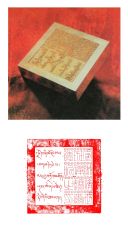
Golden Album Conferred upon the Ninth Panchen Erdeni by Mongol and Tibetan Affairs Office
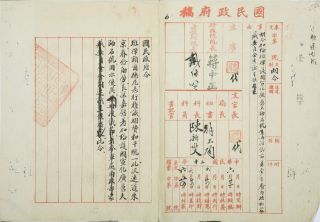
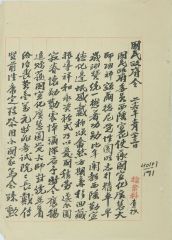
The National Government's Decree to Confer Posthumous Title upon Panchen Erdeni

Enthronement of the Tenth Panchen Erdeni in Kumbum Monastery
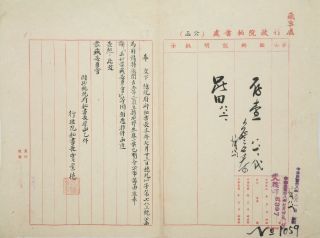
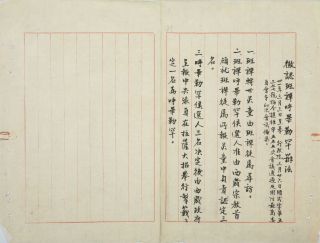
Instruction and Procedure about the Recognition of Panchen's Qubilgan
